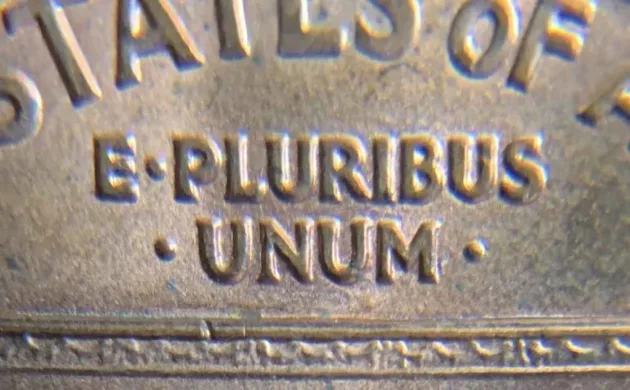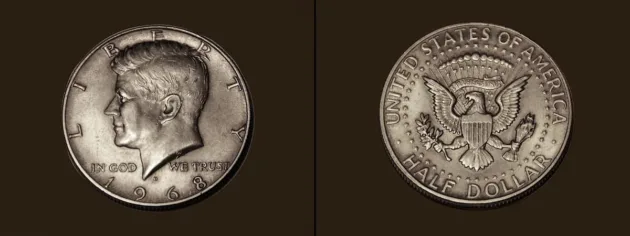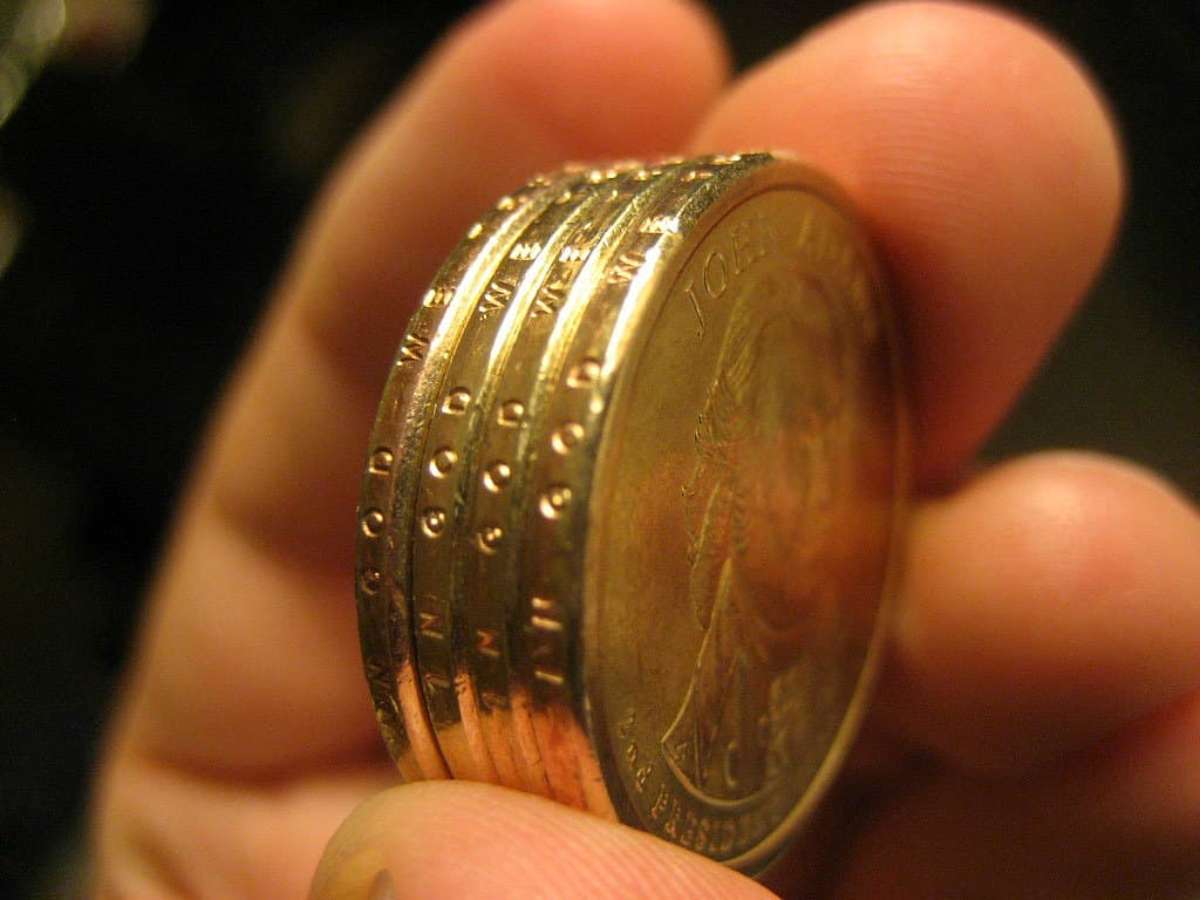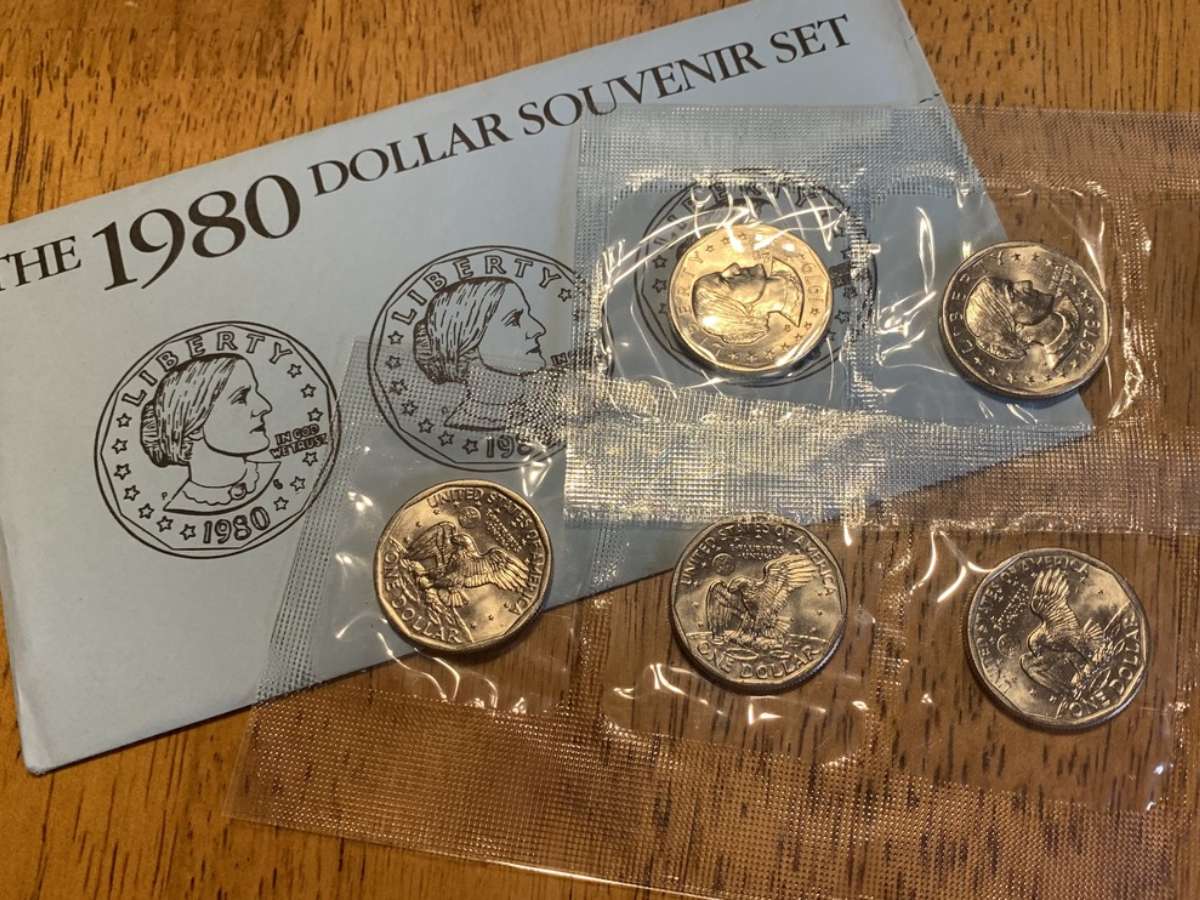
Have you seen the words E Pluribus Unum on U.S. coins? Wondering what that phrase means… Or why it’s even there?
This is a common question, because E Pluribus Unum is an unfamiliar term to some people. And it’s not even in English. So, why is E Pluribus Unum on U.S. coins?
You’ve come to the right place!
In this article you will learn:
- The origins of the phrase E Pluribus Unum
- What E Pluribus Unum means
- Why E Pluribus Unum appears on U.S. coins
- The significance of the phrase E Pluribus Unum in the United States
What Does E Pluribus Unum Mean On Coins?
E Pluribus Unum is a fairly familiar phrase. Perhaps, in part, because virtually everybody in the United States alive today has seen it on our coinage.
As some will have correctly guessed, it’s a Latin phrase. And those who have some knowledge of this classic language might recognize a couple parts of the phrase — most notably “plur” and “un”.
We see “plur” in a lot of English words — words such as plural, pluralism, and plurality. These and a variety of other words with the “plur” root usually mean many, multiple, or similar.
Then there’s “un.” That’s an easy word for many, and it generally refers to things meaning one, single, or solo.
What? Many AND one? How do those two words go together? Seems like some kind of an oxymoron.
Well, wait until you see what this Latin phrase refers to in its common English translation…
E Pluribus Unum means “out of many, one.”
What Significance Does E Pluribus Unum Have In America?
Out of many one… Out of many, one… Out of MANY, one!
If you think about it for a moment, doesn’t that describe the United States? It is, after all, a single, unified nation consisting of many states. Many pieces, if you will.
In fact, E Pluribus Unum was proposed on July 4, 1776, as part of our nation’s seal. The E Pluribus Unum national seal was planned to contain 6 shields — symbolizing 6 primary nationalities of citizens living in the United States then (English, Scottish, Irish, French, German, and Dutch).
Around those 6 shields, 13 shields would each represent the Union’s 13 colonies — which included Connecticut, Delaware, Georgia, Pennsylvania, New Hampshire, New Jersey, New York, North Carolina, Maryland, Massachusetts, Rhode Island, South Carolina, and Virginia. Of course, these 13 colonies would officially join the Union as states, which they are known as today.
While that shield design wasn’t adopted, the motto E Pluribus Unum was incorporated into the Great Seal of the United States — which was designed by Secretary of the Continental Congress Charles Thompson and Pennsylvania scholar William Barton. It debuted in 1782.
A wonderful example of the influence of the Great Seal of the United States on modern coins is the Kennedy half dollar, which debuted in 1964.
Kennedy half dollars depict the Presidential Seal — which, itself, is based on the design of the Great Seal of the United States. If you take a good look at a Kennedy half dollar, you’ll see the striking similarities between the Great Seal of the United States and the Presidential Seal.

Of course, the inscription “E PLURIBUS UNUM” is centrally featured on both!
OK, But Why Is E Pluribus Unum On Coins In The First Place?
By the time the United States Mint was gearing into action in 1792, the phrase E Pluribus Unum was part of the national zeitgeist.
So, it’s little surprise that the first U.S. coin to carry the phrase was struck in 1795.
Interestingly, this coin, the 1795 $5 gold half eagle, also carries a tails-side (“reverse”) design that resembles the Great Seal of the United States. So, it totally makes sense that same coin would showcase the inscription “E PLURIBUS UNUM” — which is part of the national seal design.
While several other coins minted in the 1790s and well into the 1800s contain the “E PLURIBUS UNUM” inscription, the motto was not made a requirement for United States coinage until 1873.
This same law, incidentally, also required the country name to appear on the reverse of all U.S. coins and permitted the motto “In God We Trust” to appear on coins, too. (Interestingly, In God We Trust first appeared on U.S. coins in 1864 with the issuance of the two-cent piece.)
The motto In God We Trust was enacted as the national motto in 1956, replacing E Pluribus Unum as the nation’s motto.
Are There Any Modern Coins Without E Pluribus Unum?
One of the most notable incidences of new coins that don’t contain the phrase “E PLURIBUS UNUM” made the news because they also lacked the motto “IN GOD WE TRUST.”
The so-called Godless dollars (errors stemming from some 2007 Presidential $1 coins that don’t contain their edge inscriptions) lack “IN GOD WE TRUST,” “E PLURIBUS UNUM,” the coin’s date, and the coin’s mintmark.
The Godless dollars were big news in 2007. Both the George Washington and Thomas Jefferson dollar coins are known to have contained errors where “IN GOD WE TRUST” (and “E PLURIBUS UNUM”) are missing. Many people didn’t know what happened or why the inscriptions seemed to have suddenly disappeared from the coins.
Perhaps the Godless dollars were far more controversial than any E Pluribus Unum-less dollars could ever be. A lot of folks thought there was a conspiracy going on — why were “they” removing God from the dollar coin?
There was no conspiracy behind the Godless dollars at all. It was just a simple mishap where the 2007 Godless dollars were being struck without the proper collar device doing its thing and striking the edge lettering onto the coin.
The U.S. Mint decided to avoid the mistake from happening in the future by moving the motto “IN GOD WE TRUST” to the obverse in 2009. Interestingly, the motto “E PLURIBUS UNUM” remained on the edge of the coin, along with the coin’s date and mintmark.
If you ever find any Godless dollars, hang onto them! These valuable error dollar coins have brought a lot of money. The George Washington Godless dollar is worth $50 to $100 or more, while the much rarer Thomas Jefferson Godless dollar can bring upwards of $400!




